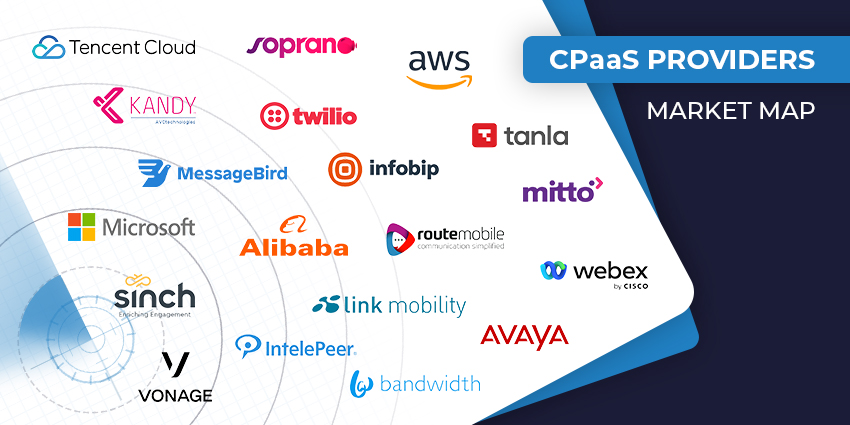CPaaS, or Communications Platform as a Service, is one of the most exciting solutions available in the comms landscape today. By 2022, the environment is expected to be worth £10.9 billion.
Building on the growing demand for flexibility in the marketplace, CPaaS uses the flexibility of a cloud landscape to deliver connectivity between people, objects, applications, and more. The solution is about transforming day-to-day operations with a more aligned flow between all aspects of the business. As businesses from all backgrounds continue to search for more versatility in the communication world, CPaaS is growing more popular than ever.
If you’re thinking of diving into CPaaS in 2020, then the following tips will help you to get started.
1. Know the Benefits of CPaaS
The first step in properly embracing any technology, is knowing why it’s valuable. Until we had the option to access communication platforms as a service, building a custom environment for UC&C was practically impossible. Companies were forced to seek out complex developer strategies and spend extra on advanced software and hardware.
Today, CPaaS means that anyone can quickly and easily build the technology stack that’s suitable for them, with the opportunity to evolve and transform at any pace. Through SDKs and APIs, there’s no limit to what you can accomplish with your communications strategy.
2. Learn about APIs
One of the most valuable components of the CPaaS landscape, is the growing presence of APIs, or application programming interfaces. These tools provide companies with low-code and low-cost ways to break down the walls around their communication stacks. As companies like Twilio and Nexmo continue to deliver easier marketplaces for API solutions, companies can embrace a pay-as-you-go solution for building the perfect UC landscape.
Communication APIs are set to become the backbone of business communications in the ever-evolving landscape. Companies will need to fully understand these tools if they want to embrace the communication strategies that will delight their customers.
3. Know Your Market Leaders
Many leading communication companies are beginning to dip their toes into the waters of CPaaS, realising that a flexible and scalable communication stack is a must-have for many brands. From ALE and MessageBird, to Twilio, Bandwidth and Vonage/Nexmo, organisations have plenty of options to choose from when selecting the solution that they need.
Remember, it’s important to examine the marketplace with a focus on the specific features that you’re going to need from your CPaaS solution. For instance, many CPaaS companies offer:
- SIP trunking connectivity for number inventory and provisioning
- Number porting services
- White labelled CPaaS for resellers
- Advanced customer support and services
- A range of customisable APIs
4. Plan a Smooth Transition to CPaaS
Selecting the right provider in the CPaaS landscape will help to encourage a better transition into the landscape. For instance, one of the things that all companies will need to consider, is stability. Search for a provider that can give you the perfect blend of security, data protection, and redundancy built into their system.
Additionally, ensure that you have access to thorough documentation that will help your developers to overcome any obstacles that they might encounter when implementing your new tools. Some CPaaS providers may offer additional training and provisioning support to help you begin launching your new custom-made communication stack.
5. Don’t Forget the Value of Numbers
While it’s easy to get carried away with the possibilities of CPaaS, exploring things like AI and chatbot technology, don’t overlook the importance of your foundations. Your number is still the starting point of your CPaaS strategy. You’ll need to think carefully about how you’re going to choose the best company to deliver your business number needs.
Decide whether you need local numbers, toll-free solutions, and whether there are any specific requirements you have for industry compliance purposes. Only once you have the initial components of reliable voice and connectivity in place can you begin to discover the true benefits that CPaaS has to offer.
6. Service Providers/Resellers: Go Beyond the Basics
It’s not just end-users that need to consider their approach to CPaaS carefully in 2020, but service providers, partners, and resellers too. According to the Cavell Group, in these early days of CPaaS, service providers are quickly recognising that they can’t just rely on delivering a platform as a service anymore. Instead, today’s brands need to offer a range of services on top of that, including contact centres, and unique communications.
Business leaders must consider the needs of their end-users carefully and embed the extra features that those clients are looking for. Sometimes, this will mean exploring things like analytics and advanced reporting. Other times, it could be a case of adding specialist services for provisioning into the mix.
7. Effective CPaaS is Omni-channel
Once you have your systems up and running correctly, it’s important to remember that CPaaS providers an excellent opportunity for companies to embrace a more comprehensive, omni-channel strategy for communications. You can add messaging and SMS into your traditional communication stack, allowing for a higher quality of engagement and communication.
Additionally, CPaaS platforms allows you to access information from your entire communication environment every step of the way. By embedding communication systems into your existing tools, you can ensure that your team members always have access to the information that they need to deliver personalised and contextual conversations for customers.
8. Keep an Eye on Emerging Tech
Many business leaders in the CPaaS space, believe that there’s a great deal of potential in the environment for disruptive technology. The flexible nature of CPaaS means that it’s easy for companies to embed advanced features into their communication and collaboration systems. IoT and AI, for instance, are becoming an increasingly exciting opportunity.
Inserting artificial intelligence into the flow of communication could help to optimise customer engagement and deliver new opportunities for self-service. AI could also assist with sentiment analysis or setting up repeat calls in the future. Additionally, adding IoT into the landscape could allow for more effective automation of crucial tasks.







